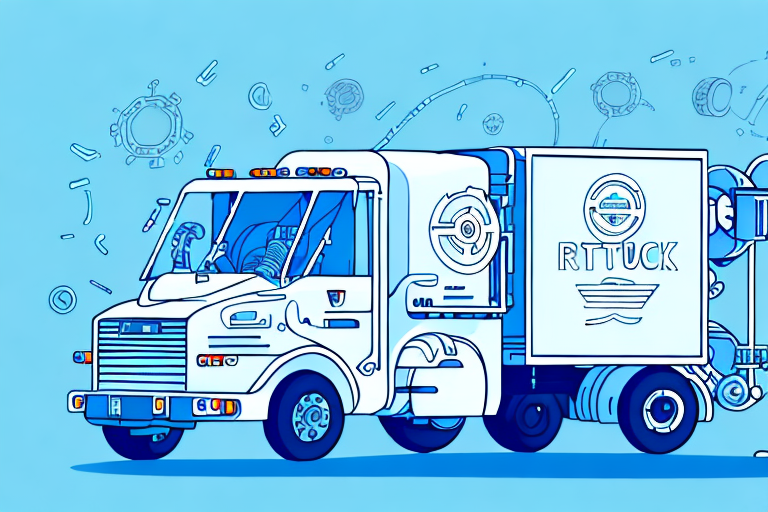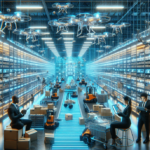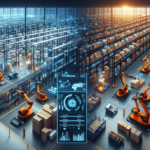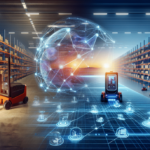Transformation of the Logistics Industry through Technology
The logistics industry has experienced profound changes over the past few years, driven by technological advancements. Automation, big data analytics, and the Internet of Things (IoT) are at the forefront of this transformation, streamlining operations, enhancing efficiency, reducing costs, and improving customer service. This section explores how these technologies are reshaping the logistics landscape.
Automation and Robotics
Automation has revolutionized logistics by deploying robots and automated systems in warehouses and distribution centers. These technologies handle repetitive tasks such as sorting, packing, and inventory management, leading to increased accuracy and speed. For instance, Amazon's use of Kiva robots has significantly optimized their warehouse operations, reducing order processing time by up to 20%.
Big Data Analytics and IoT
Big data analytics allows logistics companies to process vast amounts of information to gain insights into supply chain performance, customer demand, and inventory levels. IoT devices further enhance this by providing real-time tracking of shipments and equipment. According to a McKinsey report, companies leveraging big data and IoT can improve their supply chain efficiency by up to 25%.
Comprehensive Overview of Logistics Technology Solutions
The logistics technology landscape offers a wide array of solutions tailored to different aspects of the supply chain. From Enterprise Resource Planning (ERP) systems to Warehouse Management Systems (WMS) and Transportation Management Systems (TMS), these tools provide enhanced visibility and control over operations.
Enterprise Resource Planning (ERP) Systems
ERP systems integrate various business processes, including finance, HR, and supply chain management, into a unified platform. This integration facilitates better decision-making and resource allocation.
Warehouse and Transportation Management Systems
WMS and TMS are critical for managing warehouse operations and transportation logistics, respectively. They help in optimizing storage, handling, and routing, thereby reducing operational costs and improving delivery times.
Order Management Systems (OMS)
OMS streamline order processing by automating order entry, tracking, and fulfillment. This ensures timely deliveries and enhances customer satisfaction.
Benefits and Challenges of Adopting Logistics Technologies
Implementing advanced logistics technologies offers numerous benefits, including increased efficiency, cost reduction, and improved customer service. However, these advantages come with their own set of challenges.
Benefits
- Real-Time Tracking: Enables accurate delivery estimates and enhances customer satisfaction.
- Cost Optimization: Optimizes routes and reduces transportation costs, positively impacting the bottom line.
- Enhanced Efficiency: Automation and analytics streamline operations, reducing errors and increasing productivity.
Challenges
- Implementation Costs: High initial investment can be a barrier, especially for small businesses.
- Employee Training: Requires training staff to effectively use new systems.
- Integration Issues: Compatibility with existing infrastructure can pose significant hurdles.
- Security Concerns: Protecting sensitive data from cyber threats is paramount.
Case Studies: Successful Implementations of Logistics Technology
Several leading logistics companies have successfully integrated advanced technologies to enhance their operations.
FedEx's Advanced Analytics
FedEx utilizes advanced analytics tools to optimize delivery routes, resulting in a 10% reduction in fuel consumption and a 15% improvement in on-time deliveries.
UPS's Tracking Systems
UPS employs sophisticated tracking systems that provide customers with real-time updates on their shipments, increasing transparency and trust.
DHL's IoT Integration
DHL leverages IoT sensors to monitor shipments in real-time, enhancing the accuracy and speed of deliveries while reducing the carbon footprint by minimizing unnecessary trips.
Future Trends in Logistics Technology
The logistics industry continues to evolve with emerging technologies poised to further transform the sector.
Autonomous Drones and Vehicles
Autonomous drones and delivery vehicles are set to revolutionize last-mile delivery by reducing delivery times and operational costs. Companies like Amazon are expanding their drone delivery services to more locations.
Blockchain for Supply Chain Transparency
Blockchain technology offers enhanced transparency and security in supply chain transactions, reducing fraud and improving traceability.
Machine Learning and AI
Machine learning algorithms can predict demand patterns and optimize warehouse operations, while AI-driven systems enhance decision-making processes.
Augmented Reality (AR) and Virtual Reality (VR)
AR and VR technologies are being used for employee training, warehouse layout optimization, and providing immersive customer experiences.
Sustainability and Green Logistics
With increasing environmental concerns, logistics companies are adopting sustainable practices such as using electric vehicles, optimizing delivery routes to reduce emissions, and implementing green packaging solutions.
Ensuring Cybersecurity in Logistics Technology Implementation
As logistics companies integrate more technology into their operations, the importance of robust cybersecurity measures cannot be overstated.
Protecting Sensitive Data
Implementing strong encryption, firewalls, and secure authentication protocols are essential to protect sensitive data from cyber threats.
Regular Security Audits
Conducting regular security audits helps identify vulnerabilities and ensures that security measures are up-to-date.
Employee Training
Training employees on cybersecurity best practices, such as recognizing phishing attempts and using strong passwords, is crucial in maintaining overall security.
Conclusion
The logistics industry is undergoing a significant transformation driven by technological innovations. From automation and big data analytics to IoT and blockchain, these technologies are enhancing operational efficiency, reducing costs, and improving customer service. Despite the challenges associated with implementation, the benefits of adopting advanced logistics technologies make it a strategic investment for companies aiming to stay competitive in a rapidly evolving market. As we look to the future, continued innovation and a focus on sustainability will further shape the logistics landscape, paving the way for more efficient and eco-friendly operations.




















